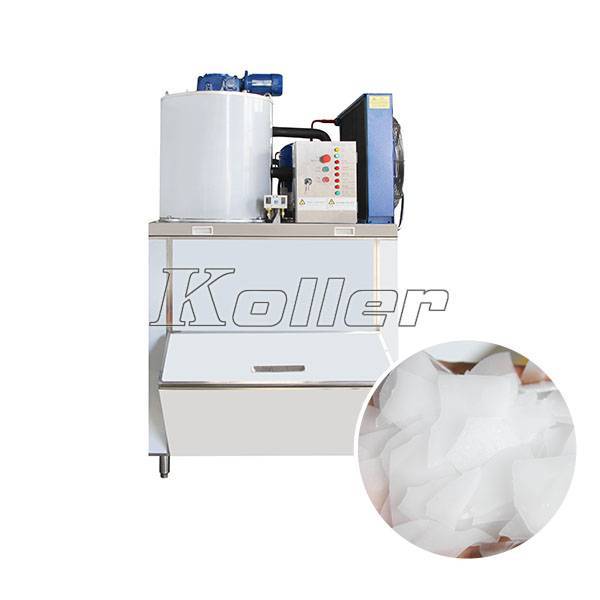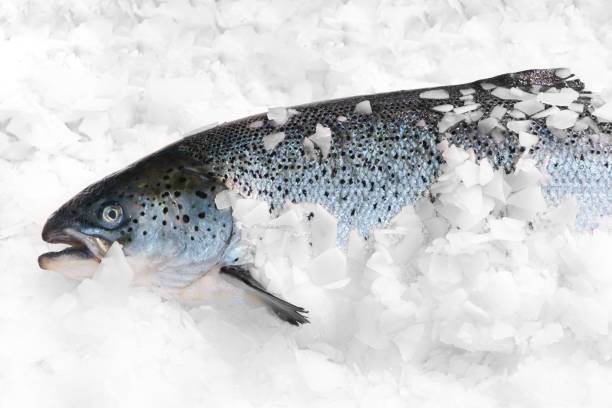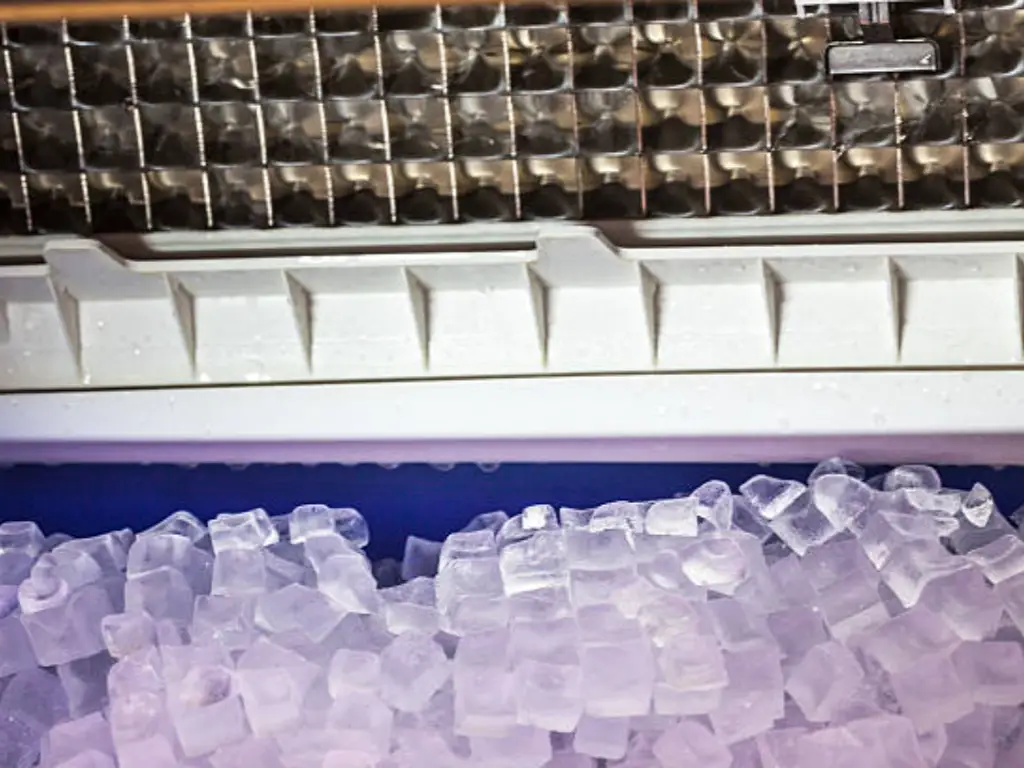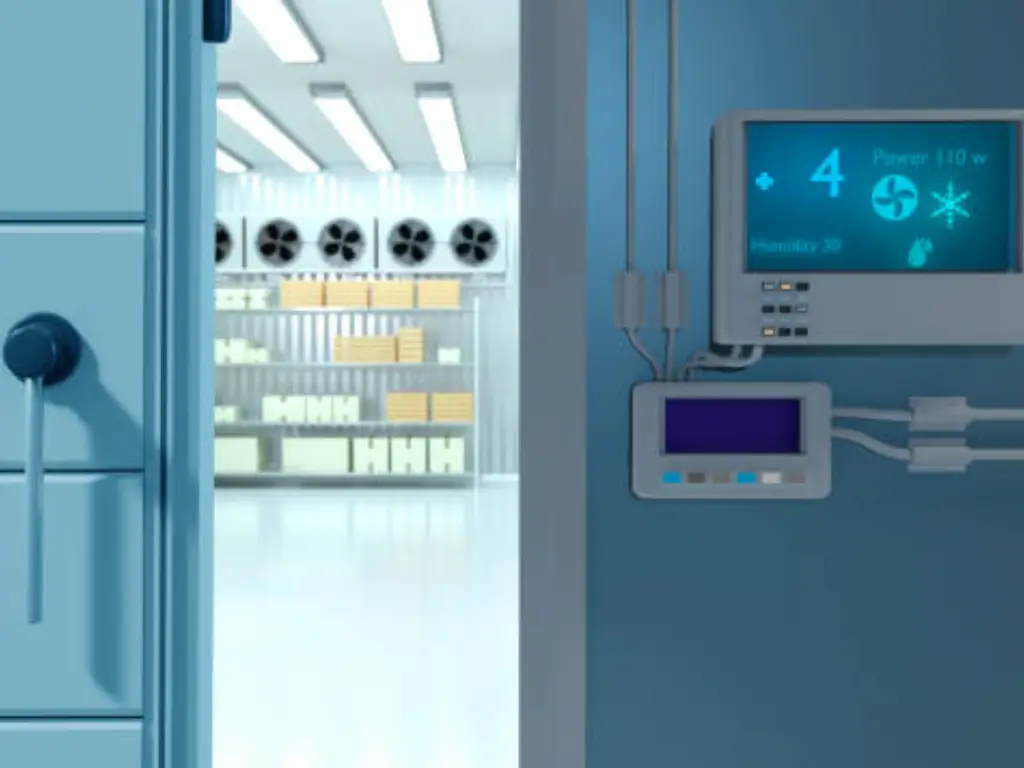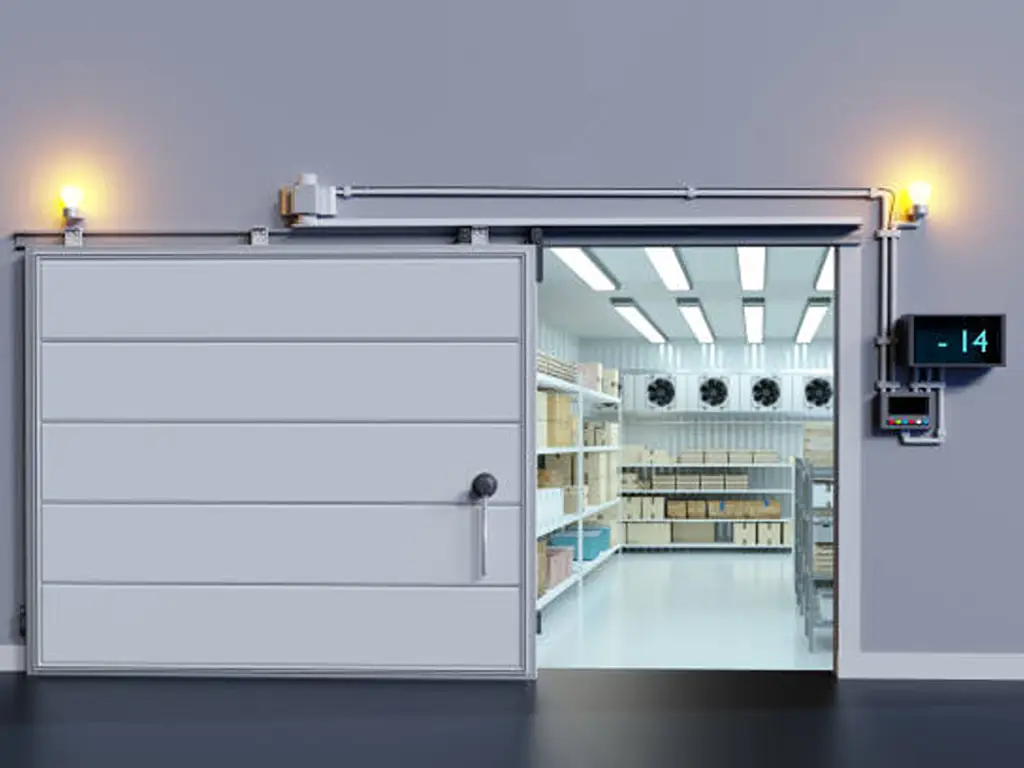
Industrielle Eismaschinen, Auch als Industrial Icemakers bekannt, sind für verschiedene Unternehmen unverzichtbar, einschließlich Restaurants, Hotels, Supermärkte, und Krankenhäuser. Sie erzeugen erhebliche Mengen an Eis in verschiedenen Formen und Größen, wie zum Beispiel Würfeleis, Scherbeneis, Platteneis, und Rohreis.
Jedoch, Diese Maschinen erfordern konsequente Reinigung und Wartung die Spitzenleistung und Hygiene garantieren. In diesem Artikel befasst.
Warum sollte reinigen? & Pflegen
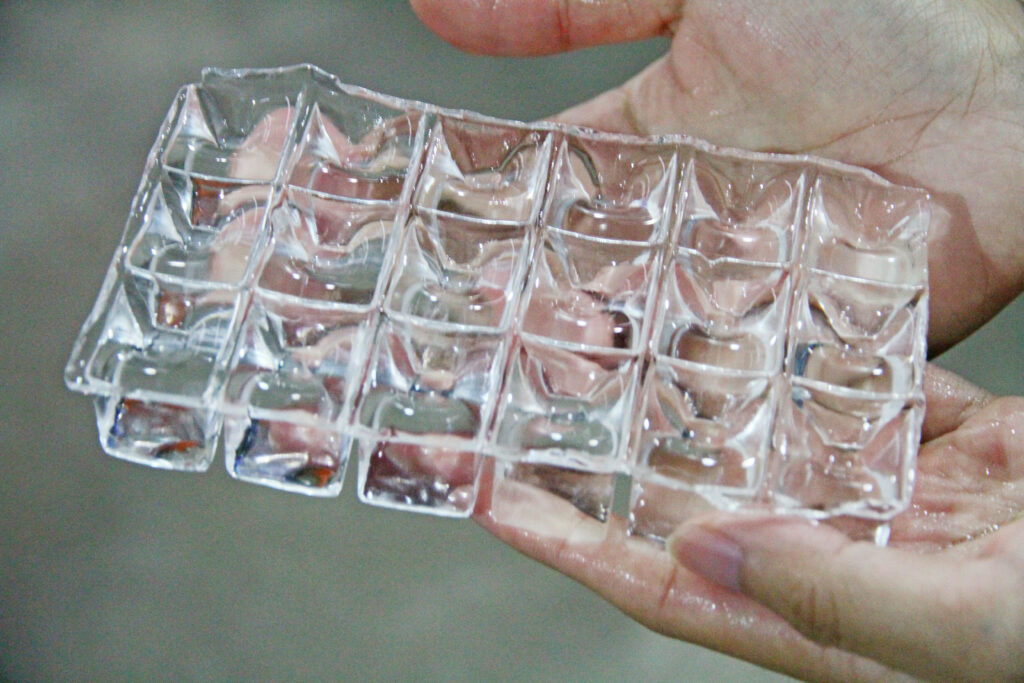
Die Kosten von Reinigung und Aufrechterhaltung industrielle Eismaschinen muss berücksichtigt werden. Anwendungen für industrielle Eismaschine in Restaurants, Hotels, Supermärkte, und Krankenhäuser erfordern eine qualitativ hochwertige Eisproduktion. Unhygienische oder unzureichende Wartungsmaschinen können die Qualität und Sicherheit des erzeugten Eiss beeinträchtigen, sowie die Effizienz und Langlebigkeit der Maschinen.
Zum Beispiel, Schmutz, Skala, oder Schimmel kann das Eis kontaminieren, was zu Problemen mit der Gesundheit von Verbrauchern führt. Außerdem, Diese Verunreinigungen können die Maschinenkomponenten beschädigen, Reduzierung ihrer Kühlkapazität und Energieeffizienz. Somit, Das Festhalten eines regelmäßigen Reinigungs- und Wartungsplans für industrielle Eismaschinen ist entscheidend.
Tägliche Reinigung
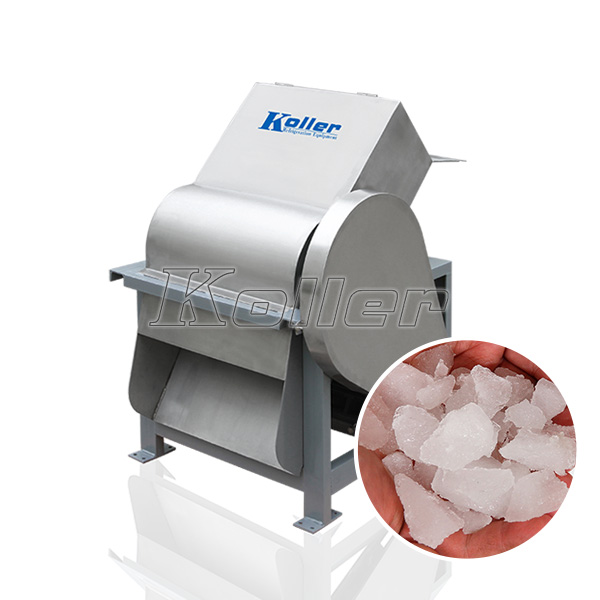
Die tägliche Reinigung ist der grundlegendste und wichtigste Schritt bei der Aufrechterhaltung der industriellen Eismaschinen’ Sauberkeit und Hygiene. Da. Dies verhindert Staub, Schmutz, oder Bakterien, die sich auf den Maschinen ansammeln und die Eisqualität beeinflussen. Die tägliche Reinigung hilft auch dabei, potenzielle Probleme oder Probleme mit den Geräten frühzeitig zu identifizieren, und ermöglicht es, Korrekturmaßnahmen entsprechend ergreifen zu können.
Tipps
- Trennen Sie die Stromversorgung und Wasserversorgung vor der Reinigung.
- Nutzen ein weiches Tuch oder Schwamm und ein sanftes Waschmittel, um die Maschinen abzuwischen’ Außenflächen. Verwenden Sie abrasive Materialien oder harte Chemikalien, die die Maschinen kratzen oder korrodieren könnten.
- Spülen Sie die Oberflächen mit sauberem Wasser aus und trocknen Sie sie gründlich mit einem sauberen Handtuch.
- Sanitisieren Sie den Eisspeicherbehälter mit Ein Desinfektionsmittel für Lebensmittel Nach den Richtlinien des Herstellers. Stellen Sie sicher, dass der Behälter ist gut gerissen und getrocknet Bevor es mit Eis nachfüllt.
- Reinigen Sie den Eisschaufel oder den Spender mit heißes Wasser und Seife, und lagern Sie es in einem sauberen Behälter.
- Überprüfen Sie den Wasserfilter und ersetzen Sie ihn gegebenenfalls.
Wöchentliche und monatliche Reinigung
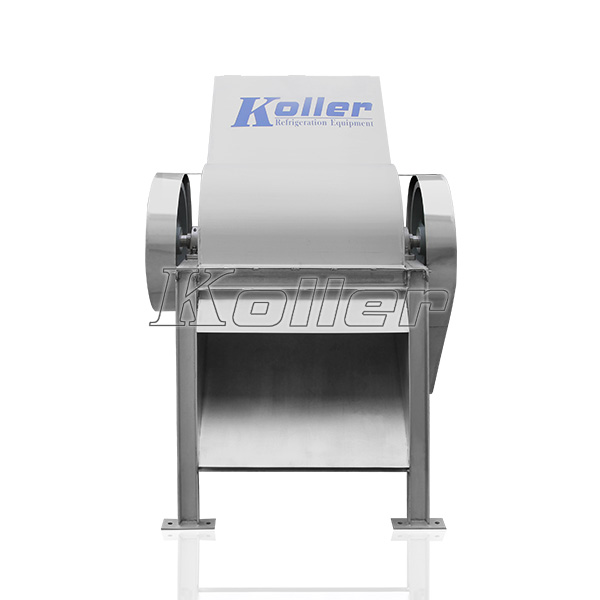
Neben der täglichen Reinigung, kommerzielle Eismaschinen Erfordern auch wöchentlich oder monatlich umfassendere Reinigung, Abhängig von der Nutzung und der Wasserqualität.
Es enthält Die Verdampferplatten abfließen und die Kondensatorspulen reinigen. Diese Komponenten sind für das Einfrieren und Abkühlen des Wassers in Eis verantwortlich, Sie müssen also frei von jeder Skala- oder Schmutzaufbau sein, die ihre Leistung behindern könnten.
Werkzeuge
Eine Entkalierlösung, ein Pinsel, eine Sprühflasche, ein Eimer, ein Schlauch, ein Schraubendreher, ein Staubsauger, und ein weiches Tuch.
Schritt-für-Schritt-Anleitung
- Trennen Sie die Stromversorgung und Wasserversorgung vor der Reinigung.
- Entfernen Sie die Frontplatte der Maschine, um auf die Verdampferplatten und Kondensatorspulen zuzugreifen.
- Mischen Descaling -Lösung mit Wasser gemäß den Anweisungen des Herstellers, und füllen eine Sprühflasche.
- Tragen Sie die Lösung auf die Verdampferplatten an und lassen Sie sie für sitzen 15 Minuten.
- Nutzen A Bürste So schrubben Sie jede Skala oder Rückstände von den Tellern.
- Spülen Sie die Teller mit sauberem Wasser mit ein Schlauch oder Eimer.
- Wiederholen Sie den Vorgang für die Kondensatorspulen.
- Verwenden ein Staubsauger Staub oder Schmutz aus den Spulen beseitigen.
- Die Teller und Spulen trocknen mit ein weiches Tuch.
- Nehmen Sie die Frontplatte der Maschine wieder.
Desinfizieren & Desinfektion
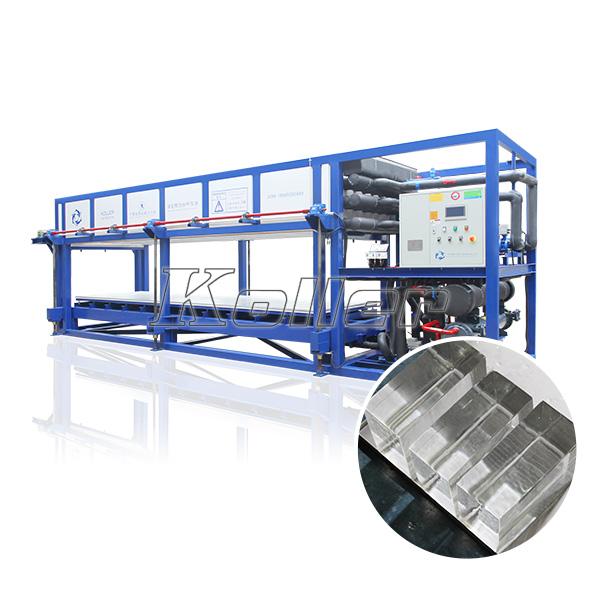
Die Bereinigung und Desinfektion von industriellen Eisherstellung sind ebenfalls entscheidend, um ihre Hygiene und Sicherheit zu gewährleisten.
Bergungen bezieht sich auf Reduzierung der Anzahl der schädlichen Mikroorganismen auf einer Oberfläche auf eine sichere Ebene. Im Gegensatz, Bei Desinfektion beinhaltet die Beseitigung aller Organismen auf einer Oberfläche. Die Bereinigung und Desinfektion sollte mindestens zweimal im Jahr oder häufiger durchgeführt werden, wenn sie nach lokalen Vorschriften oder Standards vorgeschrieben sind.
Bergungen und Desinfektion beinhaltet die Verwendung geeigneter Reinigungsprodukte und sorgfältig nach den Anweisungen des Herstellers. Hier sind einige spezifische Schritte, um die Bereinigung und Desinfektion von industriellen Eismaschinen zu desinfizieren und desinfizieren:
Schritt-für-Schritt-Anleitung
- Trennen Sie die Stromversorgung und Wasserversorgung vor der Reinigung.
- Abtropfen Sie das verbleibende Wasser oder Eis von der Maschine ab.
- Entfernen Sie abnehmbare Teile, wie zum Beispiel Tabletts, Körbe, oder Schläuche, von der Maschine.
- Mischen Sie eine Desinfektions- oder Desinfektionslösung mit Wasser gemäß den Richtlinien des Herstellers. Sie können verwenden Chlorbasierte oder quaternäre Ammoniumprodukte Zu diesem Zweck. Stellen Sie Sie sicher Tragen Sie Handschuhe und Augenschutz Beim Umgang dieser Produkte.
- Füllen Sie einen Eimer mit der Lösung und tauchen Sie alle abnehmbaren Teile ein 10 Minuten oder wie der Hersteller leitet.
- Verwenden eine Sprühflasche Um die Lösung auf die Innenflächen der Maschine anzuwenden, wie zum Beispiel Die Verdampferplatten, Die Kondensatorspulen, Der Eisspeicherbehälter, und der Eisbrecher.
- Lassen Sie die Lösung für ein Sitzen 10 Minuten oder wie der Hersteller leitet.
- Alle Teile und Oberflächen mit Spülen mit Saubere Wasser und trocknen sie gründlich mit ein sauberes Handtuch.
- Die Maschine wieder zusammenbauen und die Strom- und Wasserversorgung wieder anschließen.
Die potenziellen Folgen einer unsachgemäßen Bereinigung und Desinfektion können schwerwiegend und kostspielig sein. Zum Beispiel, Kontaminiertes Eis kann für die Verbraucher eine Lebensmittelvergiftung oder andere Krankheiten verursachen.
Darüber hinaus, Schmutzige oder schimmelige Maschinen können gegen Gesundheitscodes und Vorschriften verstoßen, was zu Geldstrafen oder Strafen führt. daher, Die regelmäßige und richtige industrielle Eismaschinen sanitieren und desinfizieren, ist von entscheidender Bedeutung.
Beheben häufiger Probleme
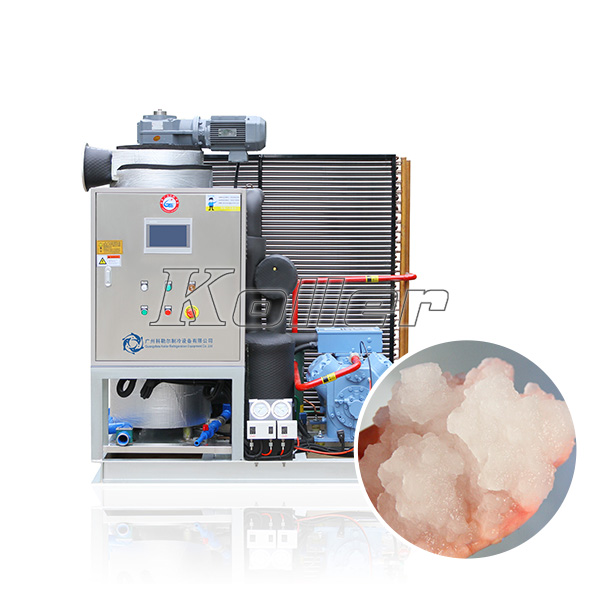
Auch bei regelmäßiger Reinigung und Wartung, Möglicherweise müssen industrielle Eismaschinen ihren Betrieb oder ihre Qualität verbessern. Diese Probleme umfassen Schimmel oder Schleimbau, Niedrige Eisproduktion, Wolken oder weiches Eis, oder ungewöhnliche Geräusche. Hier finden Sie einige Tipps zur Fehlerbehebung bei diesen Problemen:
Schimmel- oder Schleimbauung
Dies kann durch verursacht werden durch schlechte Wasserqualität, unzureichende Desinfektion, und Desinfektion, oder hohe Luftfeuchtigkeit.
Um dieses Problem zu verhindern, Verwenden Sie einen Wasserfilter, Die Maschine häufig sanitisieren und desinfizieren, und speichern Sie das Gerät an einem kühlen und trockenen Ort. Um dieses Problem anzugehen, Reinigen Sie das Gerät gründlich mit einer desinfizierenden Lösung und ersetzen Sie bei Bedarf alle betroffenen Teile.
Niedrige Eisproduktion
Dies kann durch verursacht werden durch Niedriger Wasserdruck, schmutzige Wasserfilter, Skalieren Sie den Aufbau auf Verdampferplatten oder Kondensatorspulen, oder fehlerhafte Komponenten.
Um dieses Problem zu verhindern, Überprüfen Sie die Wasserversorgung, Ersetzen Sie den Wasserfilter regelmäßig, periodisch die Teller und Ringe vorstellen, und untersuchen Sie die Teile auf Schäden oder Verschleiß. Um dieses Problem anzugehen, den Wasserdruck einstellen, Reinigen oder ersetzen Sie den Filter, Entfernung der Teller und Spulen, oder fehlerhafte Komponenten reparieren oder ersetzen.
Wolken oder weiches Eis
Dies kann durch verursacht werden durch Hoher Mineralgehalt im Wasser, Luftblasen, niedrige Kältemittelwerte, oder hohe Umgebungstemperaturen.
Um dieses Problem zu verhindern, Verwenden Sie einen Wasserfilter, Entfernen Sie die Luft von der Wasserlinie, Überprüfen Sie den Kältemittelstatus, und speichern Sie die Maschine an einem kühlen Ort. Um dieses Problem anzugehen, Installieren oder ersetzen Sie einen Wasserfilter, blutete die Luft von der Wasserleitung, das Kältemittel aufladen, Oder bewegen Sie die Maschine an einen kühleren Ort.
Ungewöhnliche Geräusche
Dies kann durch verursacht werden durch lose oder zerbrochene Teile, Vibration von Rohren oder Schläuchen, oder unsachgemäße Installation.
Um dieses Problem zu verhindern, Lose Teile festziehen oder sichern, Beliebige vibrierende Rohre oder Strümpfe kissen, und installieren Sie die Maschine gemäß dem Hersteller von EismaschinenAnweisungen. Um dieses Problem anzugehen, Ersetzen Sie zerbrochene Teile, Isolieren Sie vibrierende Rohre oder Schläuche, oder installieren Sie das Gerät ordnungsgemäß neu.
Professioneller Service und Reparatur

Während einige kleinere Probleme mit einfachen Fehlerbehebungstechniken gelöst werden können, Komplexere Probleme oder Teileersatz professioneller Service Und Reparatur von Handelseismaschinen.
Finden Sie eine professionelle Unterstützung
Zum Beispiel, ein Industrial Ice Maker Möglicherweise erfordern professionelle Unterstützung, wenn es Probleme wie durchesendes Wasser oder Kältemittel hat, ständig laute Geräusche machen, Eis nicht produzieren, oder Fehlercodes im Bedienfeld anzeigen. In diesen Fällen, Wenden Sie sich an einen qualifizierten Dienstanbieter, um Unterstützung bei Ihrem industrielle Eismaschine Maschine ist ratsam.
Tipps
Bei der Auswahl eines Dienstleisters für die Reparatur der industriellen Eismaschine Maschine, Sie sollten ihre Erfahrungen und Zertifizierungen berücksichtigen.
Suchen Sie nach einem Anbieter mit umfassenden Kenntnissen und Fähigkeiten bei der Reparatur verschiedener industrieller Eismaschinen, wie zum BeispielBalleismaschine, Würfeleismaschinen, Maschinen zur Herstellung von Scherbeneis, Platteneismaschinen, Und Röhreneismaschinen.
Auch, Suchen Sie einen Anbieter mit relevanten Zertifizierungen von seriösen Organisationen, wie Nate (Nordamerikanische Techniker Exzellenz), EPA (Umweltschutzbehörde), und Icema (International Commercial Ice Machine Association).
Diese Zertifizierungen zeigen, dass der Anbieter bestimmte Qualität und berufliche Standards in seinem Gebiet erfüllt hat.
Abschluss

Industrieeisherstellung sind wertvolle Vermögenswerte für Unternehmen, die täglich große Mengen an Eis benötigen. Jedoch, ordnungsgemäße Reinigung und Wartung sind notwendig, um optimale Leistung und Hygiene zu gewährleisten.
Durch Folgen Ein regelmäßiger Reinigungs- und Wartungsplan, Fehlerbehebung häufiges Problem, und bei Bedarf professionelle Service und Reparatur suchen, Sie können Ihre industriellen Eismaschinen über einen längeren Zeitraum reibungslos und effizient laufen lassen.

